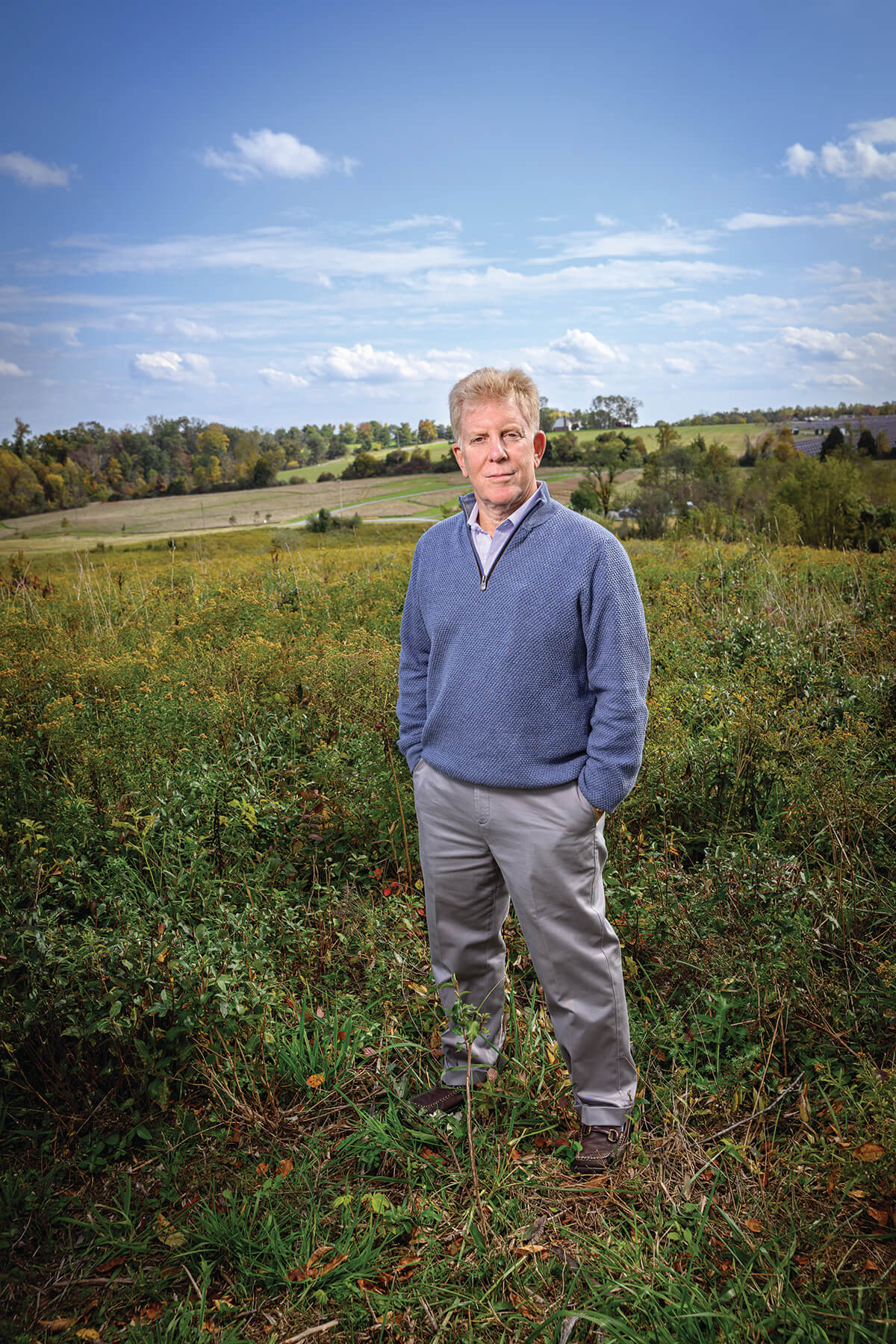News & Community
Maryland’s First Natural Burial Cemetery Makes Death an Act of Conservation
At Serenity Ridge Natural Burial Cemetery and Arboretum in Windsor Mill, "the idea is to care for the dead with minimal environmental impact."

A short hike up a grass path through a meadow brings you to a hilltop where two cherry trees create a pocket of shade. The view is mostly uninterrupted ridgelines covered in forest. It is here that, when his time comes, Dr. Howard Berg will be laid to rest.
“I tell people this is a nature preserve where people happen to be buried,” says Berg, 70, a founder of Serenity Ridge Natural Burial Cemetery and Arboretum in Windsor Mill, the first of its kind in Maryland.
Unlike traditional burial, natural burial uses no embalming and everything that goes into the ground must be biodegradable. “The idea is to care for the dead with minimal environmental impact while preserving or restoring natural habitat.”
Serenity Ridge is certified by the national Green Burial Council (GBC) and has conducted close to 40 burials since it opened in January 2023. It sits on a portion of a 177-acre property that Berg’s father bought in 1965. Berg, a gardener and Baltimore native with a deep appreciation for the natural world, read up on the idea of natural burial and even drove to New Jersey to visit the closest such cemetery.
“It was a revelation, just seeing what [the owner] had done with the property,” says Berg, explaining how they become natural havens perfect for contemplation and reflection.
There are roughly 220 natural burial cemeteries in the United States and another is slated to open soon in Silver Spring. In this era of climate change, it’s little wonder natural burial is growing in popularity. GBC statistics paint a staggering portrait of the environmental impact of conventional burial, which puts 4.3 million gallons of embalming fluid (containing chemicals like formaldehyde, methanol, and benzene), 20 million board feet of hardwoods, and 1.6 million tons of concrete into the earth annually.
Internments at Serenity Ridge are like the dust-to-dust burials of the pre-Civil War era, before enterprising undertakers began promoting embalming and ever-more-lavish caskets. Here, everything that goes in the ground must be biodegradable—shrouds are cotton or linen, coffins are usually more sustainable poplar or pine, and may not have metal liners, nails, or screws. Even the clothing of the deceased cannot contain synthetic materials. With few exceptions, embalming is not accepted. Even the headstones are low impact, carved into fieldstones that Berg hand-selects from the nearby Patapsco Quarry.
Cremated remains are allowed in biodegradable vessels, but Berg says they are educating people about the negative environmental impact—cremation contributes to greenhouse gas emissions and air pollution, while natural burials sequester carbon, a major contributor to climate change.
Steve Kuehne, the cemetery manager, spent 10 years in the conventional burial industry and says the difference here isn’t just in what goes below the soil.
“People seem more at ease with the services here, especially kids,” he says, looking over the inviting meadows crisscrossed with grass paths. “In a traditional cemetery, there are a lot of rules. Here, the family can get involved as much or as little as they wish. The emotion and intention behind everything is different.”
He adds that traditional burials are also expensive, often inhibiting a family’s ability to memorialize their loved ones as they wish. The average price of a funeral in the U.S. is $7,848; at Serenity Ridge, plot, burial, flowers, and a headstone cost $3,850.
For Berg, a retired colorectal surgeon, Serenity Ridge is just another way he can help others. He is aware of what makes the place unique: “Here, we’ve combined the private, public, religious, and nonprofit sectors. This isn’t a cemetery, it’s a community.”